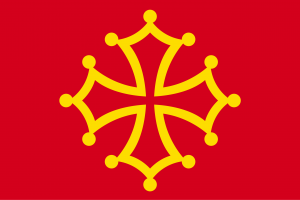Language/Occitan-post-1500/Grammar/Questions
Hi Occitan (post 1500) learners! 😊
In this lesson, we will learn about forming questions in Occitan (post 1500) and the differences between yes/no questions and wh-questions.
Once you've mastered this lesson, take a look at these related pages: Pronouns, Conjugation, Imperative Tense & Prepositions.
Basic Word Order[edit | edit source]
In Occitan (post 1500), the basic word order in a declarative sentence is Subject + Verb + Object (SVO).
For example:
- Joan beut l'òliba. (Joan wants the owl.)
When forming a question, the word order changes to Verb + Subject + Object (VSO) or occasionally Question Word + Verb + Subject + Object (WVSO).
For example:
- Beut Joan l'òliba? (Does Joan want the owl?)
- Perque beut Joan l'òliba? (Why does Joan want the owl?)
In both of these examples, the verb comes before the subject, which is what distinguishes declarative sentences from questions.
Yes/No Questions[edit | edit source]
In Occitan (post 1500), yes/no questions are formed by placing the auxiliary verb before the subject. The auxiliary verb used depends on the tense of the main verb, as well as whether the verb is transitive or intransitive.
Let's take the example sentence from earlier:
- Joan beut l'òliba. (Joan wants the owl.)
To form a yes/no question, we need to add the auxiliary verb Est-ce que and move the verb before the subject, like so:
- Est-ce que Joan beut l'òliba? (Does Joan want the owl?)
If the verb were in the present perfect tense, we would use the auxiliary verb aver instead of Est-ce que:
- Joan a amat l'òliba. (Joan has loved the owl.)
- A Joan amat l'òliba? (Has Joan loved the owl?)
Notice that the verb changes from amat to a, which is the present perfect form of the auxiliary verb aver.
Here's another example with an intransitive verb:
- Els caminen pel parc. (They walk in the park.)
- Caminen els pel parc? (Do they walk in the park?)
Notice that the verb caminar is intransitive, so there is no direct object in the sentence.
Wh-Questions[edit | edit source]
Wh-questions are questions that start with a question word, like qui (who), que (what), perque (why), etc. In Occitan (post 1500), the basic word order for a wh-question is Question Word + Verb + Subject + Object (WVSO).
For example:
- Qui ven? (Who is coming?)
- On vètz l'òliba? (Where do you see the owl?)
- Perque beut Joan l'òliba? (Why does Joan want the owl?)
The conjugation of the verb and placement of the subject and object follow the same rules as in yes/no questions.
Examples in Context[edit | edit source]
Let's see some examples of questions in context with a short dialogue.
- Person 1: Jane, lis la revista? (Jane, are you reading the magazine?)
- Person 2: Non, jo escoti musica. (No, I'm listening to music.)
- Person 1: Que menjam avui? (What are we eating today?)
- Person 2: Fetuccini amb salsa de tomata. (Fetuccini with tomato sauce.)
- Person 1: Perque no pòrtatz la jaqueta? (Why aren't you wearing a jacket?)
- Person 2: Fa ben còp, no la necèssi. (It's quite warm, I don't need it.)
Summary[edit | edit source]
In Occitan (post 1500), questions can be formed by changing the word order of a declarative sentence to VSO or WVSO. In yes/no questions, the auxiliary verb is placed before the subject. In wh-questions, a question word is placed before the verb. Examples in context provide good usage and help to understand this concept better.
To improve your Occitan (post 1500) Grammar, you can also use the Polyglot Club website. Find native speakers and ask them any questions!

